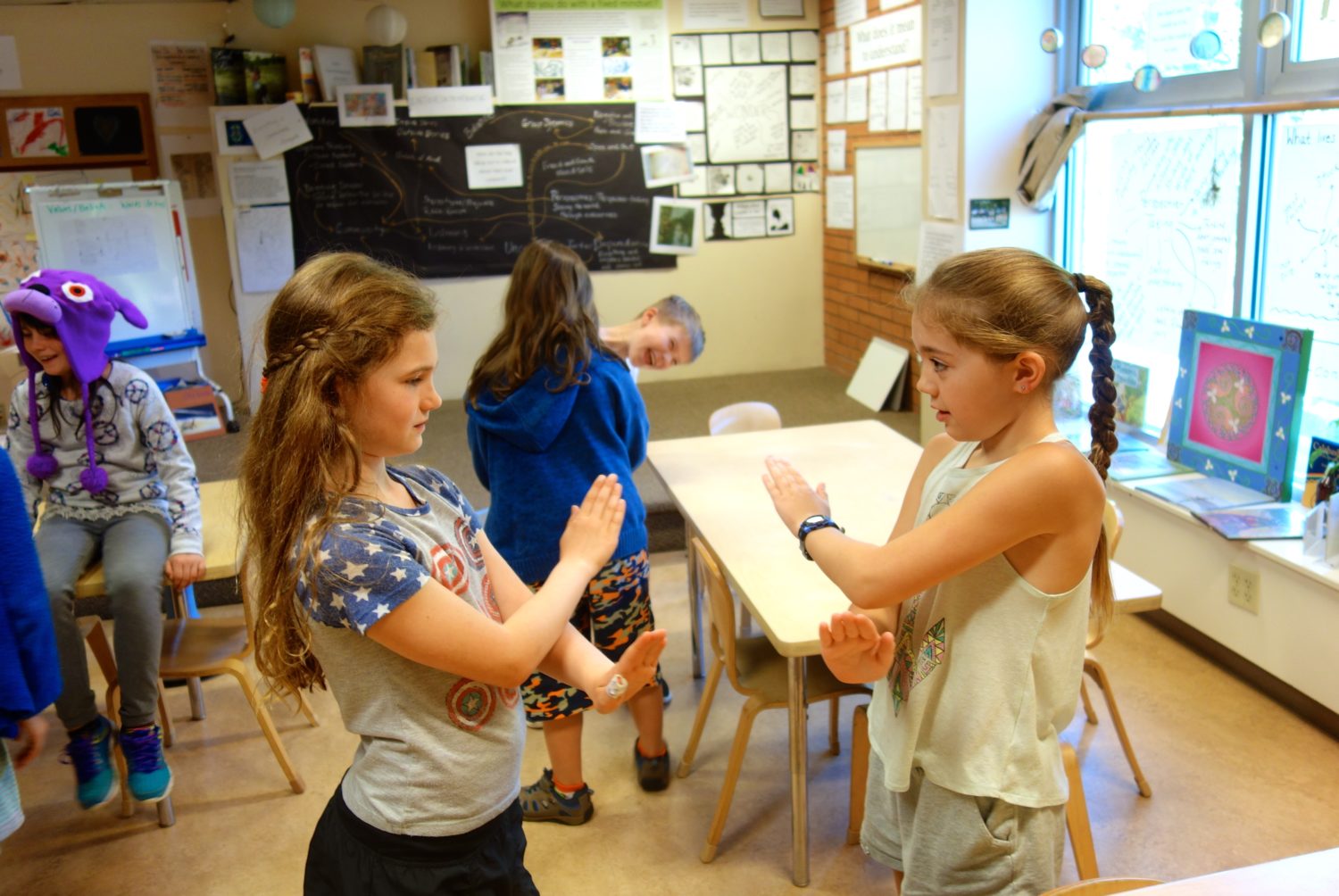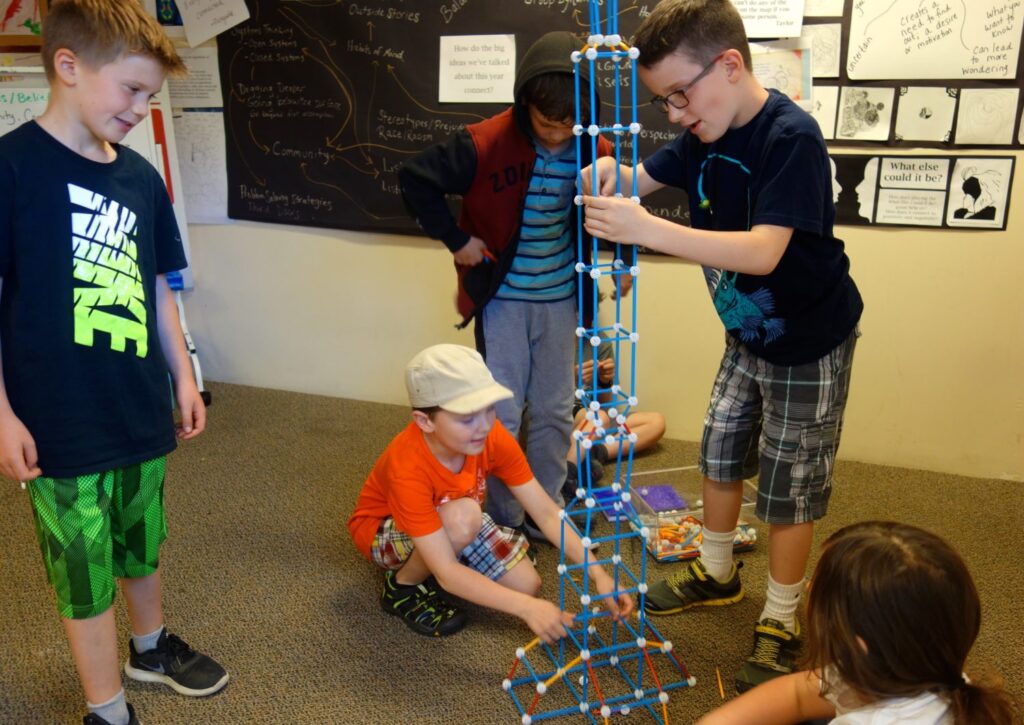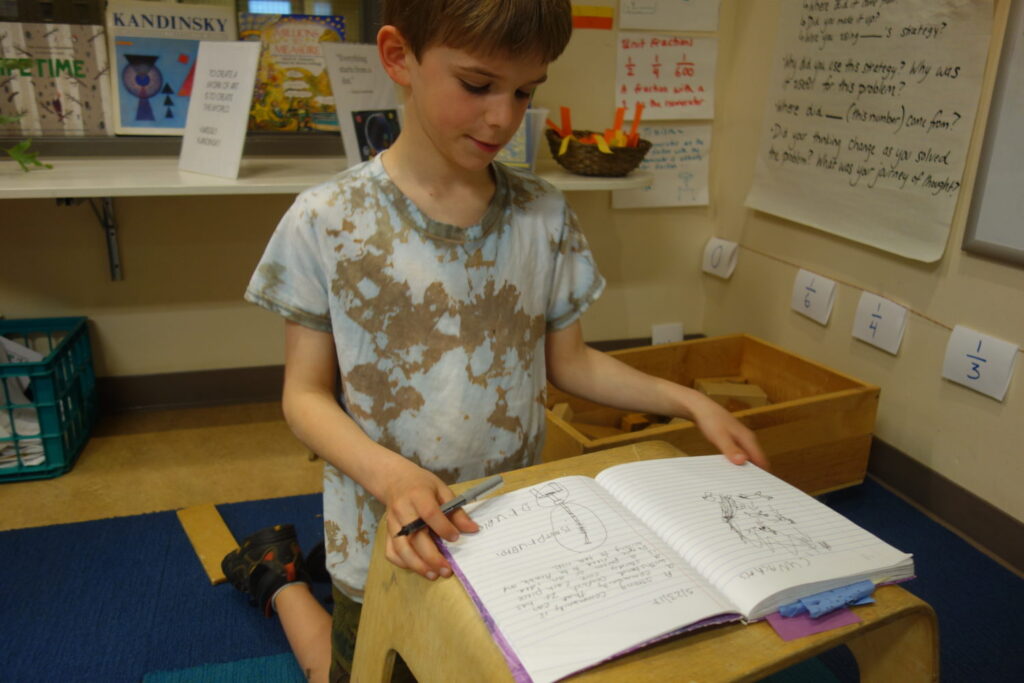What kind of community do you want to be in?

Many schools spend the first six weeks of school building community in order to establish a foundation that will support learning through the rest of the year. I can relate to the hope ofl developing caring relationships and problem-solving strategies that will keep us away from conflict. As a person who would inherently prefer to avoid conflict, I can see why this idea is appealing. However, in order to understand how to get out of conflict (work through and move beyond productively), we need to be able to get into it. We also need to be willing to have, share, and identify emotions – both our own and those of others, to engage in reflection, and to do the hard work of seeking to understand each other. At Opal School, this kind of community-building is ongoing.
As we approach the end of the year, I find myself facing a familiar question: After all this community building work, why are we still having conflict? And, just as quickly, I find so many reasons. Perhaps because the end of the year brings up a lot of emotions: transitions bring up all kinds of feelings, which can make it harder for us to access the skills and knowledge we’ve earned. Perhaps because we are deeply immersed in this lifelong work of learning how to navigate conflict, we’re still finding our way into it easily. But, perhaps most importantly of all, is because we can. We can have strong emotions and share countering viewpoints and make mistakes. And, at this point in the year, we have a lot more tools to reflect and move forward when we do.
This happened this week when we had a particularly ugly outdoor break. People were arguing with each other, mistreating materials, and being disrespectful to teachers. Interventions were attempted by students and teachers, but it was clear that many community members were not ready to process, make changes, and move forward. Trying to resolve the issues in this moment was only digging us in deeper. We went inside where I set a firm boundary and asked the students to eat lunch in silence, something I had not done before. As a reluctant quiet fell over the room, I began setting up material provocations – loose parts collage, different types of building materials, liquid watercolor, and more. Something magical began to happen. Once the students realized they were going to be able to go to materials, their demeanor shifted. Their eyes lit up. Perhaps the biggest change was in the dynamics – they now saw that we were going to figure this out together. It was no longer two separate entities of students and teacher, each with their own differing agendas. Instead, we were aligned together in a way that we could reflect and figure out how to move forward. We were a “we” again. Seeing the invitations on the board, Ollie said, “I think I know what we’re going to do! I think we’re going to Explore because it’s going to help us with the conflict outside. I think the materials will help us.”

I invited students to go to materials with two questions. The first is familiar to Opal students – we ask this all the time: What kind of a community do you want to be in? The second was a variation and felt newer to this group of students: What mindset do you want your community to have around conflict? I then asked them to think about which of the available choices would best support their thinking with these questions. This is a common practice at Opal in which students justify and commit to their choice out loud while also practicing being flexible knowing that there may not be space at their first or even second or third choice. When this happened this time, another amazing act happened when George stepped up with an act of empathy and support, giving up his spot at a coveted place for a friend.
George: I’ll swap out with Rowan.
Rowan: No, it’s okay.
George: No, I want to.
Rowan: But you want to be with the watercolors.
George: No, it’s okay. I’ll go to pattern blocks.
Rowan: Thanks, George.
As I tried to figure out a way to mend and move our community forward, I had many hopes. Everything was happening so fast and there were so many emotions. I had no idea, in the moment, if anything would work or come of it. I had hoped that having the silent lunch would pause the conflict and keep it from escalating further. I explained to the class that I knew I was not at my best in the heat of the moment and clarified my intentions for setting some boundaries. This was in an effort to not only model apologizing but also to repair my relationship with the class. By offering materials, I hoped to normalize conflict and offer a playful way out. I was struck by how quickly the materials helped us get to a place of engagement, reflection, and even joy. I wondered if the exchange between George and Rowan could have happened without all of those parts.
After thinking about the two questions with materials, students captured their thinking in their writing notebooks. Here are a few excerpts that came out from our late spring reflection on community:
The kinetic sand makes me think about community. It works together like a community.It works its best to stick together. And it falls apart like a community too. When a community starts to fall apart, you need to try to put it up again. Communities transform slowly like kinetic sand. They shift slowly. It would be easier for one person to make a change. It takes time for a group because there are more ideas to shift. Once you reach consensus it feels really good, but it might take a lot of time.
It was calming to get a break from the problem and to be at a material that I have not been to in a long time. I want to the community to see conflict as an opportunity to fix something and to become stronger than they were.
A strong community is a community that can withstand conflict. It has a sturdy core. Each piece (in my building, representing community) is a person or an idea. People need to be flexible and willing to take risks.
I want to live in a community that will keep growing with every oopsie. The community needs to be willing to figure out how to get there. I want the community to believe they can work it out because that makes it more likely to happen.

These reflections are powerful statements on their own. And they offer so much more. They are something for us to go back to the next time we find ourselves in conflict. Part of our lifelong work is to question and reflect on whether our words and actions are in alignment with our beliefs and values. These students will surely have moments in which their words and actions are quite different from what is reflected here, but now that they are here, we can keep going back to them. We can remember the kind of community we want to be in and figure out how to get there.
- What kind of community do you want to be in?
- What role does conflict play in community-building for you?
- How do you reflect on the alignment of your words, actions, values, and beliefs?
- How can classroom communities build a sense of “we” rather than a sense of “us and them”?

Thank you for this thoughtful post. It speaks to the power of materials and to the competence of the children, the competence of the community. The end of the year can be a difficult time, transitions are hard. The fact that communities take work and that there will be oopsies is a real life lesson.